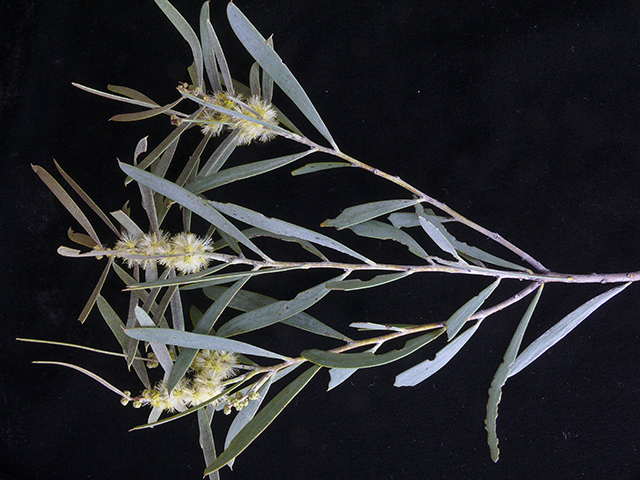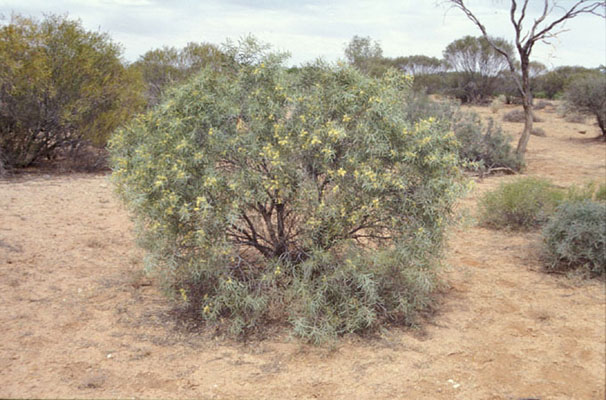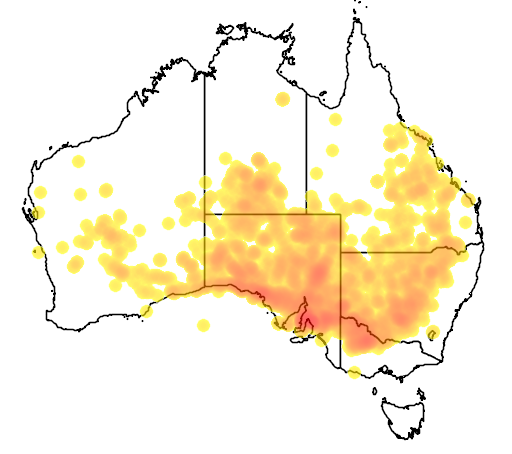Description
Common names
Miljee, Umbrella Wattle (Vic), Nelia (Qld), Umbrella Bush, Bean Bush, Boree, Cooba, Curly Yarran, Karagata, Middia, Midget Tree, Milgee, Miljea, Nelia, Nelia Tree, Ram"s Horn Tree, Umbrella Acacia, Umbrella Wattle, Whacka, Whyacka.
Scientific names
Acacia oswaldii.
Family
Mimosaceae.
Genus
Acacia.
Name origin
Oswaldii, after F. Oswald, 19th century collector for F. von Mueller.
Rainfall
200mm.
Growth rate
Moderate.
Growth height
2-6m.
Presence in Australia
Noted in Brookong catchment. Becomes widespread to the west of the region.
This specie has been identified in the following Australian states: Qld, NSW, ACT, Vic, SA, NT, WA.
Habitat
Widespread in various habitats and vegetation communities, including open eucalypt forest or among other acacias.
Habit
Densely branched erect or spreading shrub or small tree, 2-6m high. Finely fissured dark grey bark and angled or flattened branchlets. Sharp-tipped "leaves" and large woody twisted pods.
Similar species
Distinguish from Boree (A. pendula) by "leaves". Miljee "leaves" are sharp-tipped.
Site preference
Heavy to moderately-drained soil. Partial or full sun. Tolerates drought and frost.
Characteristics
Moderate growth rate. Lifespan beyond several decades. Often appears umbrella-shaped due to regular trimming by livestock.
Flowering
Golden-yellow or pale-yellow, Oct-Dec.
Seed collection
Dec to late Feb. Monitor closely as seeds released immediately or within 1-2 days of maturity. Abundant seeder every few years.
Propagation
From scarified seed (±6 viable seeds per gram).
Regeneration
From seed. Birds disperse seeds around vegetated areas.
Shade and shelter
Useful low-level cover in windbreaks.
Land protection
Legume - improves soil fertility by "fixing" nitrogen.
Fuel
Very good.
Timber
Timber heavy, close-grained, durable and disagreeably-scented. Not commonly used, although reputedly suitable for cabinet work.
Wildlife
Prickly dense foliage good cover for birds.
Koori
Clubs and other weapons made from timber. Seeds ground to edible paste.
Ornamental
Ornamental value.
Other
Subsistence fodder. Pods eaten by sheep.



